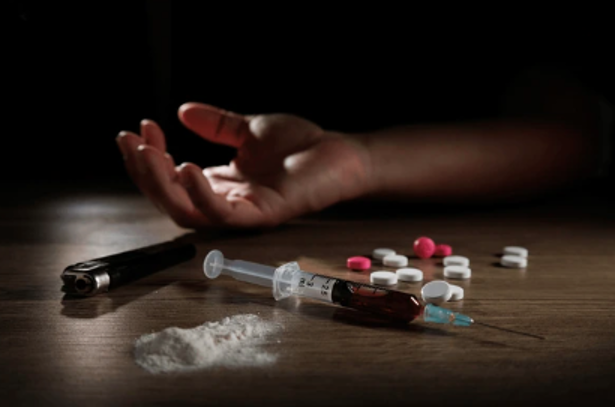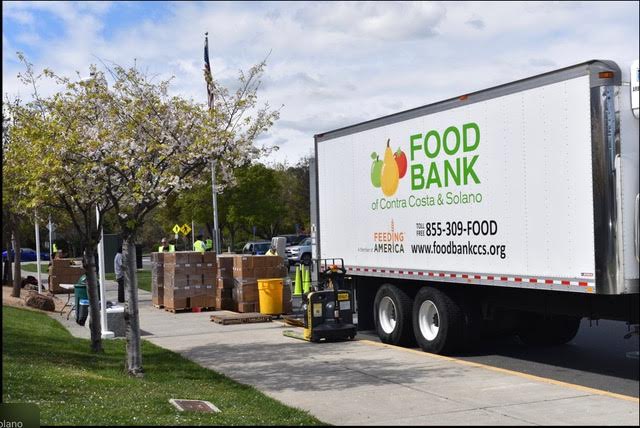The challenges of addressing the homelessness, mental health and drug addiction crisis are taking a toll on communities across the Bay Area. However, it is the latter that the Substance Abuse and Mental Health Services Administration (SAMHSA) defines as a chronic disease.
According to the SAMHSA, an annual average of 782,000 people age 12 or older in the Bay Area have used an illicit drug, which is 21.9% of the Bay Area population. This rate stands higher than the national average (14.7%) and the California average (16.8%).
Experts and community organizations are working hard to slow down this growing crisis.
“[Addiction is] definitely an issue that I think every community should be aware of and should have solutions for,” said Pamela McGrath, associate executive director of Trinity Center. The Walnut Creek rehabilitation center provides safety net services such as housing and financial stability to those experiencing poverty and addiction, also partnering with detox centers and sober living houses. “We want to care for people in whatever way they need to be cared for.”
Addiction and mental health are often coexisting issues. A lack of access to mental health services such as counseling or therapy can cause people of all ages to turn to drug abuse, says Cara O., who works at Duffy’s Napa Valley Rehab center.
“People are numbing themselves with drugs because they can’t afford medical insurance, there’s no psychiatric help,” said Cara, a recovering addict who asked we not use her last name. “People walk around with bipolar disorder and don’t know they have it, so they’re numbing themselves and using drugs and alcohol to help. People are suffering from PTSD, especially our veterans.”
The center, located in Calistoga, provides addiction treatment services to adults living in Northern California. Cara said she’s seen a diverse mix of people come through their doors, many who’ve had underlying mental health issues. And when they are not willing to get help for that, it can turn into an addiction, she added.
“Substance use disorders — the repeated misuse of alcohol and/or drugs — often occur simultaneously in individuals with mental illness, usually to cope with overwhelming symptoms, reports the National Alliance on Mental Health.
At the Trinity Center, McGrath said homelessness and poverty are two common factors they see that can lead to drug addiction in those who don’t have access to food and shelter. Homelessness is one factor that can affect mental health, which, in turn, can lead to drug addiction, she said.
“If I found myself unsheltered and homeless, spending one or two nights on the street, hey, I might go out and spend my last penny on something to numb me up, because it’s a kind of a horrible existence,” McGrath said. “So, it’s cause and effect for both. You can end up unsheltered because you’re addicted, or you can end up addicted because you are unsheltered.
“We want to solve both,” she added. “We want people to be healthy and we want people to find housing.”
Both McGrath and Cara agree that the Bay Area’s current homelessness climate is a driving force in the addiction crisis.
“Being unhoused is something that is an issue that I think is, you know, stems from policies that our lawmakers make. It stems from attitudes that our community has,” McGrath said. “It stems from all kinds of issues that can only be solved when everybody sits at the table and says, ‘we will not stand for people being homeless.’”
Cara said she sees an additional pattern that is pointing people to substance abuse.
“We’re overwhelmed with the homelessness so people that are homeless,
they have nothing better to do, boredom takes over and they decide to do drugs, and depression kicks in,” Cara said.
Reports show that between 2017 and 2020, the Bay Area’s homeless population grew by 6,878 individuals to 35,118, according to the Bay Area Council Economic Institute. This is due to the Bay Area’s uncomfortably high job-to-housing unit ratio of 4.3-to-1, far above the nationwide recommended ratio of 1.5-to-1.
Practice what they preach
Duffy’s rehabilitation center provides a diverse mix of services to aid those who enter the facility. One is its fitness program, which focuses on spiritual, physical, emotional and mental fitness. Duffy’s also provides a safe space, employing both recovering and recovered addicts to work with clients.
“I’m in recovery, I’m an addict. I’ve been clean and sober for over five years,” Cara admitted. “We [our staff] help clients learn a new way of life, in a 12-step program … we help detox them their first few days that they’re here, and they attend six hours of programming. And we do our best to be as helpful as we can in the uncomfortable transition to a new way of a better life.”
Cara said that beating addiction is realizing that addiction isn’t black and white, and that it’s a complicated decision.
“You either want it or you don’t, there really is no in between. There’s no one foot in, one foot out. It doesn’t work like that with addiction,” Cara added. “I was spiritually broken. I didn’t lose anything (sic). So I made the choice in that decision, I’m done, I want a new way of life. So I made that choice, and I stayed clean with that choice.”
Providing hope
Other local organizations like the Trinity Center work to treat repercussions and causes of addiction. It focuses on providing housing and shelter for the unhoused suffering from addiction by connecting people with detox centers and housing programs.
“So when we get somebody who’s interested in going to a detox facility, we get on the phone with our resources, and we find them a place to go immediately, and then they go to detox, and then they might move into a sober living environment,” McGrath said. “We are still available to continue our case management with them, continue supporting them in whatever way we can. And then after they’re out of those programs, if they still need Trinity Center services, they’re welcome to come back in for our services.”
Local organizations like these are taking the battle against the addiction crisis step-by-step, coming together to make a difference in countless lives.
*Additional resources:
National Institute on Drug Abuse
Keerthi Eraniyan will be a 10th grader this fall at California High School in San Ramon.








